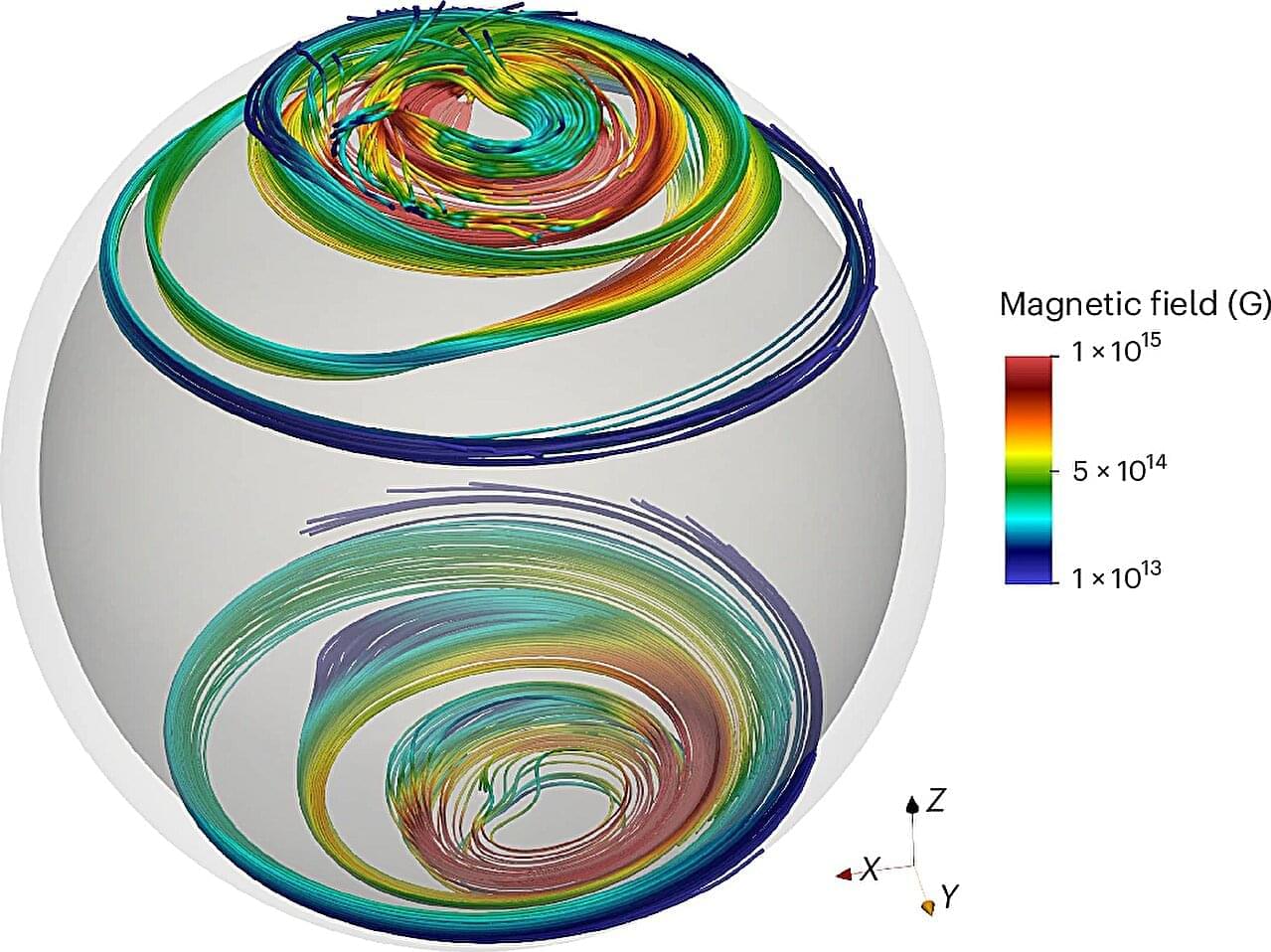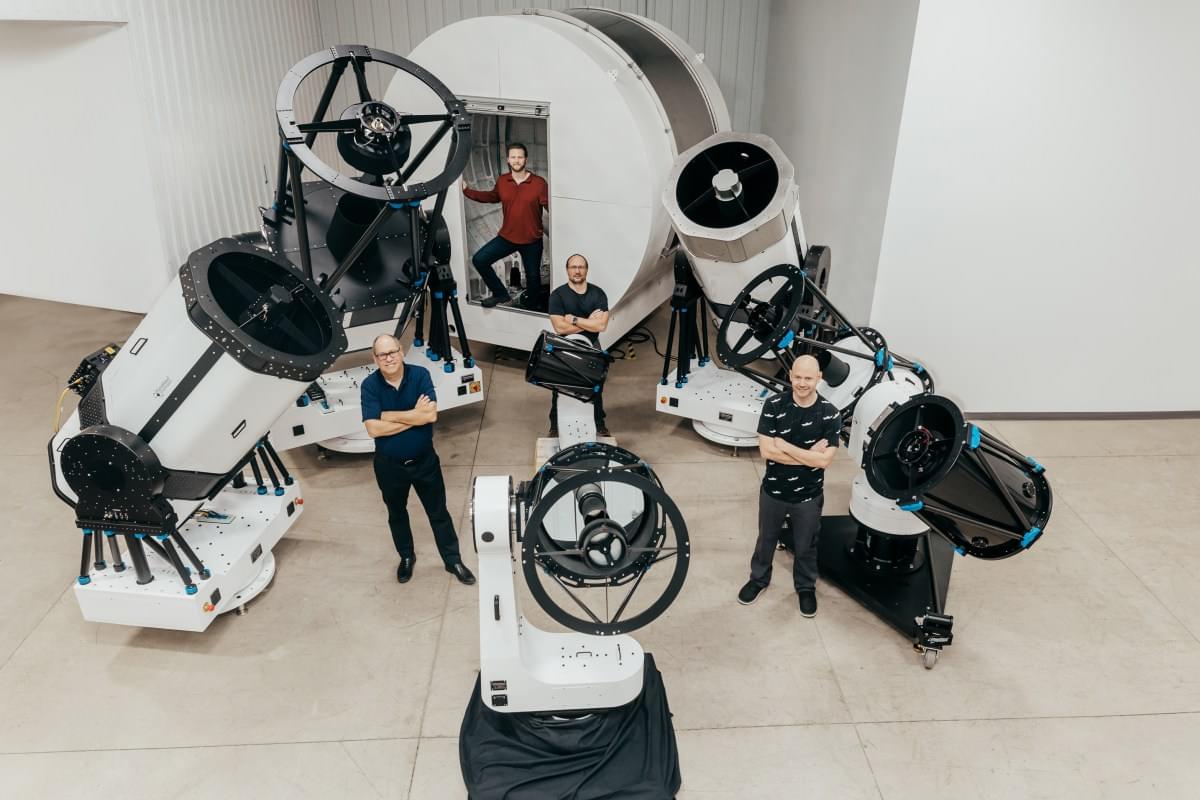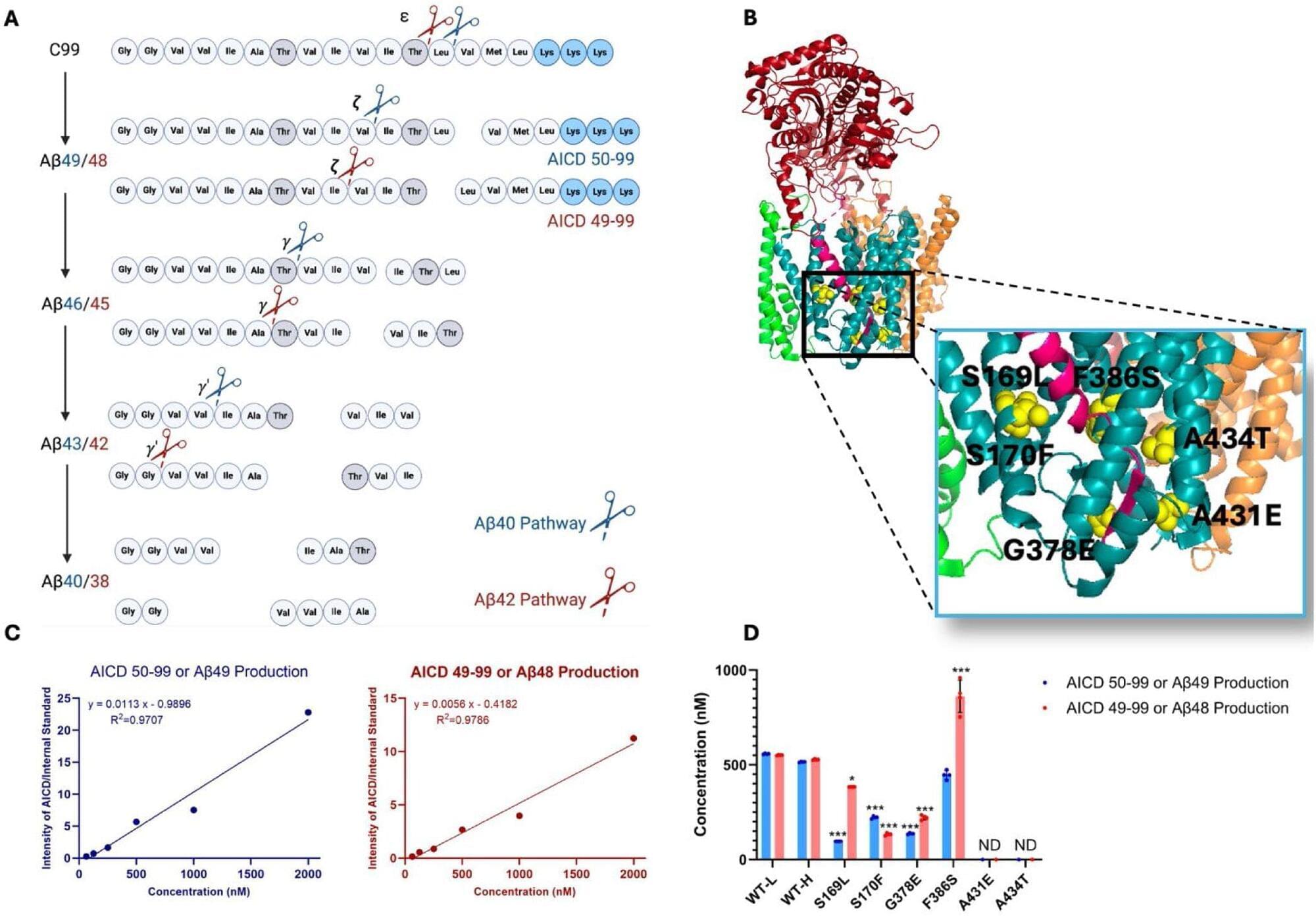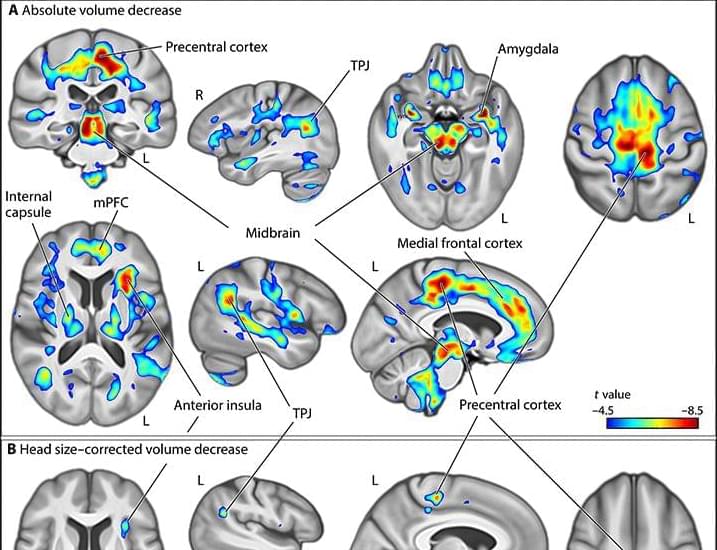An international team of scientists has modeled the formation and evolution of the strongest magnetic fields in the universe.
Led by scientists from Newcastle University, University of Leeds and France, the paper was published in the journal Nature Astronomy. The researchers identified the Tayler-Spruit dynamo caused by the fall back of supernova material as a mechanism leading to the formation of low-field magnetars. This new work solves the mystery of low-field magnetar formation, which has puzzled scientists since low-field magnetar discovery in 2010.
The team used advanced numerical simulations to model the magneto-thermal evolution of these stars, finding that a specific dynamo process within the proto-neutron star can generate these weaker magnetic fields.









